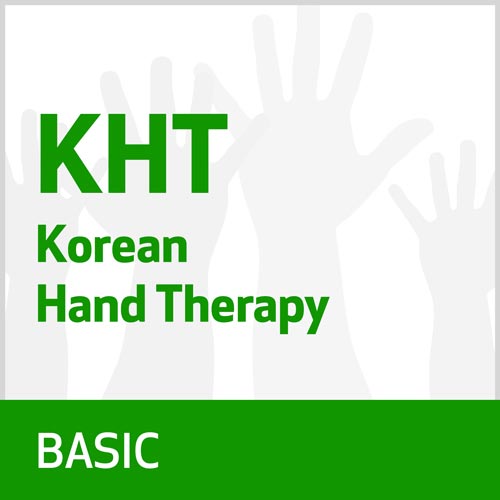Maybe it Really is "All in Your Head"
Myself and all licensed acupuncturists have slogged through a very rigorous program of learning and memorizing the 365 acupuncture points and their indications and applications. We have worked through memorizing, with anatomical landmarks, the locations of the 12 Main meridians, the Divergent meridians and the Muscle meridians and the Eight Extraordinary Meridians, points and applications. And the lists go on! Even though nobody has found a “Meridian” in the body, we take it as an article of faith that they are actually there in the body, somehow, somewhere. Were you ever brave enough to consider the idea that the meridians and all those points are“figments of your imagination”?
What if I told you that in fact meridians and acupuncture points do not exist in the physical world. Wow, wouldn’t that upset your belief apple-cart, after all that toil, money and study time? You would point to all of the great results you get applying acupuncture techniques to your clients.You would probably reject those statements as delusional and an attempt to discredit your profession.
However consider what an acknowledged expert in the acupuncture profession wrote. Dr. Felix Mann (1931-2014) was an experienced acupuncturist and author, who practiced in London. He lived abroad for many years, also in China, and had an international reputation. His last book, "The Revolution in Acupuncture" 1992, contains the findings and experiences of several decades of practical acupuncture.
In his view, neither points nor meridians exist. In his book he also writes, for example:...”the meridians of acupuncture are no more real than the meridians of geography. If someone were to get a spade and tried to dig up the Greenwich meridian, he might end up in a lunatic asylum. Perhaps the same fate should await those doctors who believe in meridians (chapter III, page 31).
Nonetheless, acupuncture practitioners achieve partly astonishing successes with their needles, lasers or other instruments and electronic acupuncture devices–or else they would have no patients. Acupuncture works, but why and how? Can we consider for discussion the possibility that Dr Felix Mann is correct, and the implications this can have?
I would like to share some of my experiences that seem to point in the truth of Dr. Mann’s assertion.
Case 1: Erasing Meridian Excess
Several years ago, Dr .Woo Tae Yoo , OMD, Ph.D.,, the creator of Korean Hand Therapy, conducted a post Pacific Symposium workshop in San Diego, California. During that workshop, he drew a large hand on the blackboard representing the hand of a seminar participant. He then determined, through pulse diagnosis, that the participant showed Large Intestine meridian Qi excess. He had a second audience member verify the pulse. Then, on the hand on the chalkboard, he drew a Large Intestine hand “micro-meridian”and its direction of Qi flow (same as the flow direction in the LI body meridian).
He then used his finger to swish, several times, against the direction of flow of the blackboard LI meridian image, thus “sedating”the Qi flow. After that, he asked the same participant member to recheck the LI pulse. He reported that it had become unquestionable normal. He never treated the actual patient, but made physical changes!
The question is, how did this happen? What are the implications?
Case 2: Reducing Back Pain with Intention
Here is another example from a Dr. Yoo seminar. He asked for a volunteer who had pain in their body. One participant said he had pain in his lower back at the L-5/ S-I area with a pain level of 8, on a 10 point scale.
In this instance, he did not treat the corresponding points directly on the participant’s hand, as is usually done in Korean Hand Therapy. Instead, he had each seminar participant draw a hand in their seminar notebook and indicate the corresponding L5-S1 pain location on the dorsal surface of the hand (according to the Korean Hand Therapy correspondence map).
For treatment, Dr.Yoo asked all the seminar participants to imagine the painful area in the patient relaxing and healing while they tapped with their finger tips on the L-5/S-1 area of their paper hand drawing. After two minutes of tapping, he asked the “patient” his pain level and how he felt. The pain went down from a 10 to a “2” and he felt much better.
How did this happen? What are the implications?
Case 3: Same Fingers, Different Results.
The author personally learned three systems that utilize the hands: Koran Hand Therapy, Su JokHand Therapy and regular body acupuncture. It so happens that what are called acupuncture points on the fingers, for example the little finger, are points on the leg in the KHT correspondence system and on the arm in the Su Jok correspondence system. However, depending on the system the practitioner is using at the time, the points function as described in that system. This is also true of correspondences of internal organs. In one system, for example, a certain location on the palm of the hand in KHT corresponds to the bladder and in the Su Jok system it corresponds to the diaphragm area. Both work according to the system being used.
So how could this be? We will get to the answer soon.
Modern Digital Technology Joins TCM
For the last 100 years there has been a worldwide attempt to understand and harness what can best be called “subtle” energy. Perhaps the same “thing” Traditional Chinese Medicine refers to as “Qi”.Technology of each time period was developed to supposedly harness the “subtle” energy. The devices and approaches have gone by many names, such as radiesthesia, radionics, bioresonance, to name a few.
The purpose of the devices is to “harmonise the energy” to cure illness, regulate health and reduce pain.
That it worked was shown by the results it produced. However, modern science could not measure this “subtle energy”, so it was not “real”. It was written off as a placebo effect. The same fate befell Traditional Chinese medicine because even now in the US is considered an experimental procedure, even though thousands of years old.
With the advent of the atomic age and the development of quantum physics and several associated theories, such as “entanglement theory”, a “scientific” rationale has been developed by thinkers trained in both physics and healing to explain the action of Qi, subtle energy, prana, etc.
In the subtle energy context, one organisation has developed an “I-Chingbio regulation acupuncture software” as a system to support or replace conventional needle acupuncture. This “system” is composed of a client, a practitioner and a specially designed I-Ching Acupuncture digital system. It is important to understand that the computer system alone does not heal or rebalance meridians or the body. It is simply a specialized link between the client and the practitioner.
The “acupuncture” session begins like every other, with a dialogue between therapist and client to understand the underlying health issues and to establish a conscious relationship of mutual trust and respect.The client may or may not be physically present but may be connected to the therapist through Skype or a call phone call, but this is not a requirement. Alternatively, the client can be present as in a regular therapist-client interaction in a clinic setting. Therefore, the meeting can be “real”or “virtual”.
The health issue is input to the software as a written statement. Alternatively, the system can simply “read” the current situation.
Once the system is activated, in a matter of minutes, the output conclusions are generated in written form and are broadcast. This includes an:
- Acupuncture treatment protocol based on the ancient “I-Ching” acupuncture balance system.This protocol can also include traditional points to treat specific issue based on TCM theory and practice. This protocol can be “broadcast”remotely (like from Vancouver to Madagascar or given to the client in person).
- I-Ching Fractal visual pattern representing the expected condition of the client to be viewed as a visual version of the treatment. It is also a treatment protocol generated by an algorithm.
- I-Ching Hexagram, appropriate to the client, showing the two trigram lines, including changing lines.This is accompanied with interpretation for the client’s health in both TCM terminology and western medical-psychological terms.
- A virtual traditional Chinese herbal formula, such as Xiao Yao San, as well as virtual homeopathic formulation and Schuessler Cell salt.
The Rationale
All of this sounds like a little hocus pocus, but then so does Qi moving in meridians. However, there is a new paradigm being developed and tested by such institutionally approved luminaries as Dr.William Tiller, Ph.D, former head of Stanford Universities metallurgy department. He has also been involved deeply, over the last 30 years, in researching how subtle energy healing works (Tiller Institute.com). The designers and manufacturers of the computerized acupuncture diagnosis and treatment device described above suggest the following reason for the development of their device, built on the history of bio-resonance/radionic devices in the west.
They cited the following:
The Crucial Connections For Healing Success are the Interface of the Practitioner–System/Device—Client.
“The crucial factor in healing is the therapist and the way he or she uses the systems and devices, but also the way the patient is integrated into the psycho-biophysical circuit. Devices take their full effect in the context of the psycho-biophysical circuit of therapist/patient/device. Conditions, such as clinic design, impressive technological devices, presentation of the healer, etc are important elements in minimizing doubt in the client.
The therapist's ability to connect to the patient's consciousness is just as decisive for the therapeutic success as the patient's confidence in a probable success. The practitioner's mental abilities (today we might say “Conscious Intention”) and the patient's confidence define the outcome.
The conclusion from the above discussion is that our consciousness, our personal beliefs in our healing systems and our’s and the client’s conscious intent for healing are crucial for the success of all energetic treatments. What led the author to these beliefs are some of the experiences he had in the energetic healing context as well as those presented in the beginning of this article. Below he describes why he thinks the three examples of non-physical healing worked. Healing in the Subtle energy domain, such as acupuncture, must meet three conditions for it work.
Case 1: Dr Yoo and the Blackboard Pulse Changing Experience.
The effective combination was:
- A client who believed in the “expert”, Dr Tae Woo Yoo, OMD. Ph.D.
- The healing “system” composed of a blackboard seen by everyone, the TCM theory, which everyone in the seminar knew and believed in and the strategy of sedating the meridian by motion of the hand on the imaginary LI meridian. The acupuncture healing ritual was complete.
- The expert healer
Case 2: Lower Back Pain Reduction
The effective combination was:
- A participant-client who needed help for back pain.
- The healing system included the hand drawing in each participant’s notebook, commonly held belief in TCM theory, belief this would work and the tapping on the pain area on their drawings.
- A group of healer-acupuncturists who were intent on healing the client of their lower back pain.
Case 3: Same Hand, Different Locations, Same Results.
In a clinical situation, the author has applied two hand systems to cure the same problem. The interesting fact is that in both systems the locations of the internal organs are totally different, yet each system works as intended.
In terms of the above three criteria:
- The client believed in the healer and whatever he/she was doing
- The context included explanatory diagrams, tools for point location and treatment devices.
- The healer understood and believed both hand systems worked
So what can we conclude from the above examples and what are the implications of those conclusions?:
We are energetic holograms and every point in our body contains all the information of every other point. Since we are a hologram, we are also a hologram embedded in an infinite hologram. In this perspective our information is everywhere at all times. The information accessed and activated in the hologram depends on the intention-consciousness of the practitioner. It is a little like having a phone number in our smart phone and then finding the one we wish to call. The same point applies in KHT or Su Jok or body acupuncture or other micro systems. Each responds appropriately for the system being “called”by the practitioner.
Conclusion Applied to KHT
Since this author practices Korean Hand Therapy primarily, that will be the example used for this conclusion. Understand that the conclusions apply to all forms of acupuncture and energetic treatment–medicine.
The Healing Model
The Therapist-Acupuncturist:
- Has a strong belief in the efficacy of several thousand years old systems of acupuncture.
- Is schooled in all aspects of traditional Chinese medicine.
- Believes in the effectiveness of using the hand (ear, foot, scalp, face) for all forms of treatment including corresponding points as well as hand meridian treatments.
- Has a strong desire-intention to help the client.
The Client:
- Makes an appointment for treatment because they
- believe and hope, based on recommendations, that this practitioner and his/her methods will work for them.
The Method (in the KHT Method):
- The new client is inducted into the belief in KHT with pictures of how the body corresponds to the hand and stories of the effectiveness.
- The therapist does an intake and establishes a relationship of mutual respect and trust.
- The therapist then performs a diagnosis using specialised tools to search for tender points. This stage may also include palpation, pulse diagnosis, muscle testing, tongue observation, etc.
- She/he then applies a treatment with hand needles, magnets, moxa or little metal pieces on tape or all methods sequentially. The therapist holds a strong belief and intention for his/her methods to work.
- Changes in the client experience are noted; less pain, relaxed, etc. indicating that something changed for the better.
- Instructions are given to the client for self-treatment at home until the next visit, thus engaging the client’s self –intention for healing.
- The sequence is a complete cycle of the KHT healing ritual.
The client leaves experiencing and believing that the ritual has helped (less pain) and that more may be needed. They show-off the little pellets to friends and family and explain how they work for healing. They keep them on every night to reinforce the healing process.
Implications for Korean Hand Therapy, Micro-systems and Acupuncture
Practitioner
- Stays focused during the healing interaction with aware presence and healing intention. Listens to intuition. Use whatever treatment aids are available, such as computer programs, lasers, colored light, sound and vibration. Practice focusing methods such s Qi-Gong. May have intuition about a particular client outside of the regular clinic time
The Client in the Healing Setting
- Clients believe hi-tech means efficacy of the process. As much as possible, include such devices in the healing context.
- Help create a client expectation that this is going to work. Everything around the client tells them this is going to work. Design the healing space to convince them that they are going to heal.
The Healing Ritual
- Apply something visible and “sensible” to the client so they “know” they are being treated.
- Needles, tape on pellets, tape on Seeds, Moxa, electrostim, color pens, magnets, massage of the hand points found. etc.
- Give the client homework as a participant in the healing ritual; adding pellets overnight, pressing seeds, colored pen dots and marks.
- Frequently ask the client if whatever you just did changed anything, feels better, gives sensations, causes “energy” movement, feels warmth.
Applying the Holographic Concept to KHT
Numbers 1-3 above can be applied remotely in a very simple way. The method involves the therapist holding the rubber hand model and tapping on the corresponding points and then needling them with map pins. An even better way is to hold a Skype session to get a symptom update and then ask the client to meditate (sit quietly with eyes closed) while the therapist taps on the corresponding and meridian points with a small tapping device and then inserts map pins into the corresponding areas. The client is sent a hand diagram with the treatment points-areas marked for the client to color in with a pen. The picture is kept in a prominent area for frequent viewing by the client.
Next Steps
Observe your own practice, clinic and clients and make sure items 1, 2 and 3 above are present. Upgrade deficiencies you find. Then healing will occur whether meridians and acu points are“real” or just “mind constructions”.
Other Courses By This Teacher
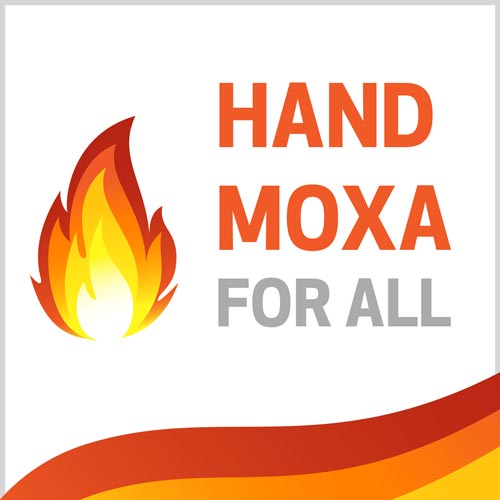
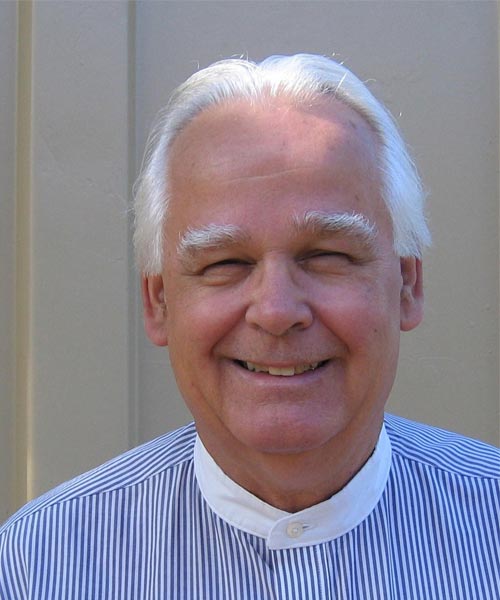
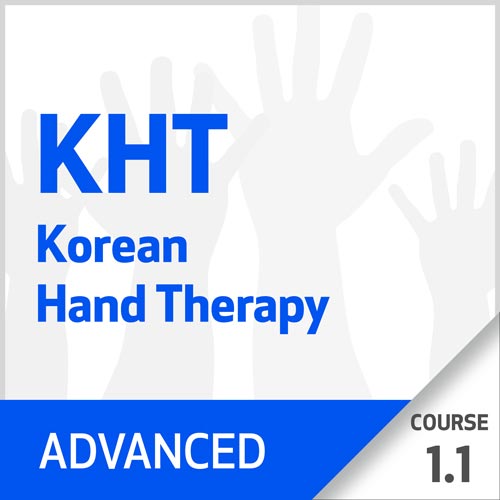

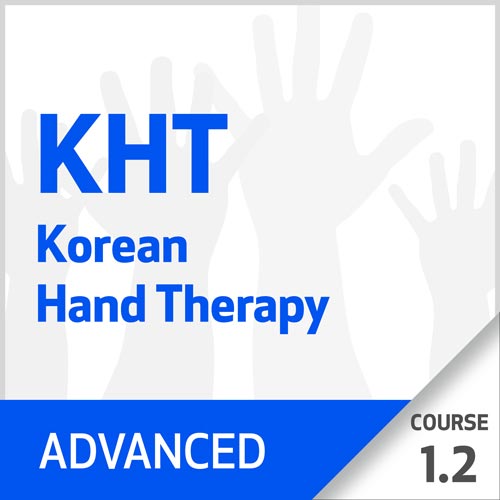

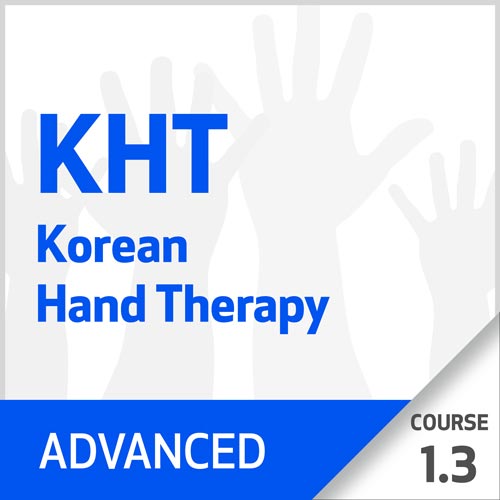

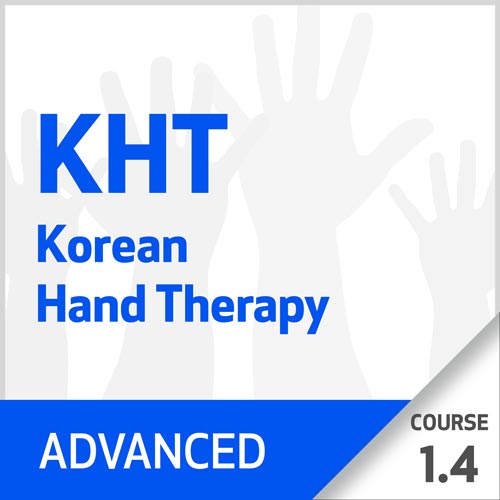



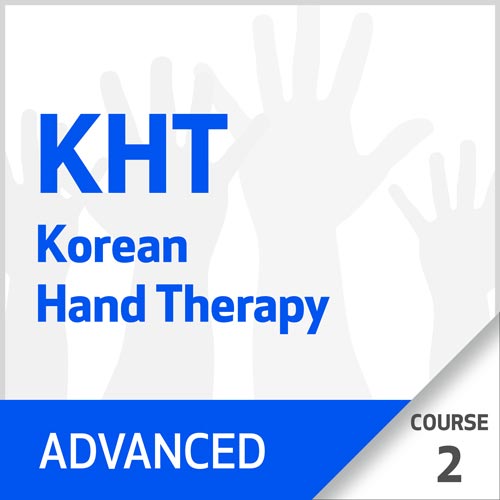

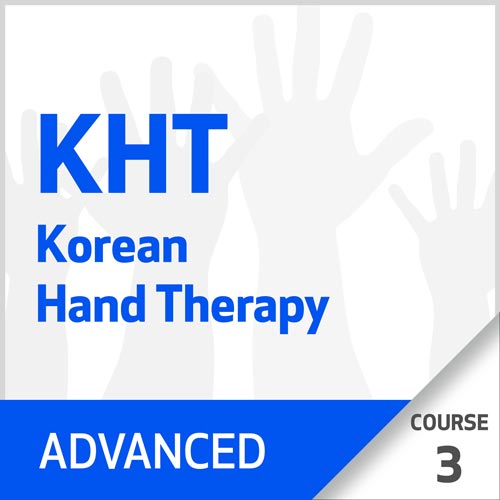

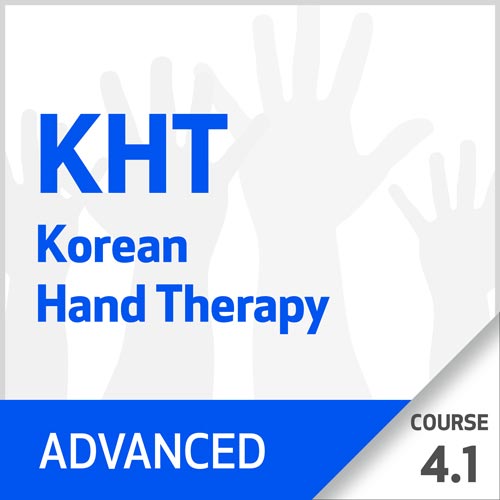

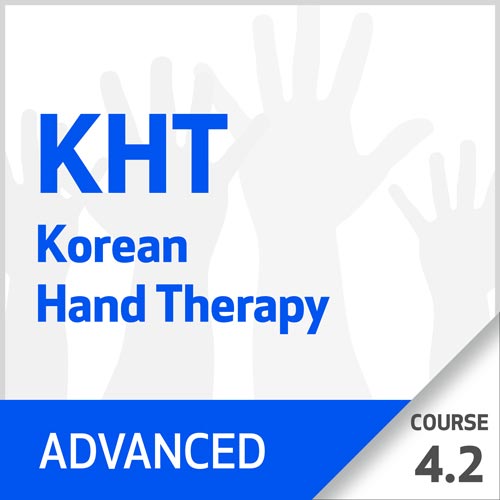

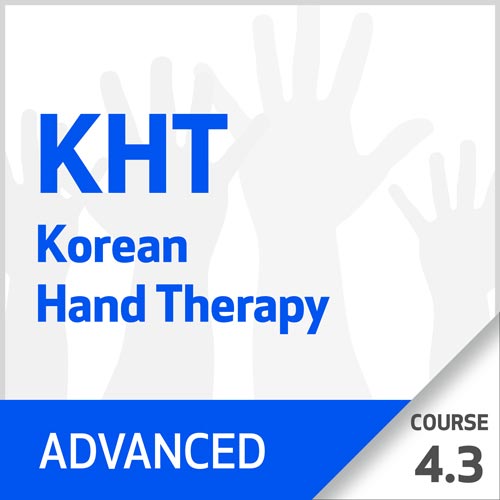

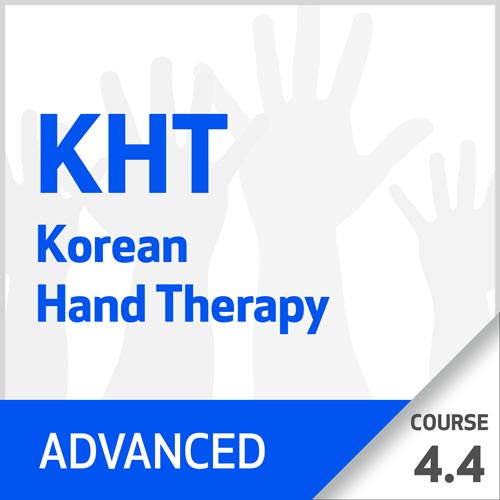

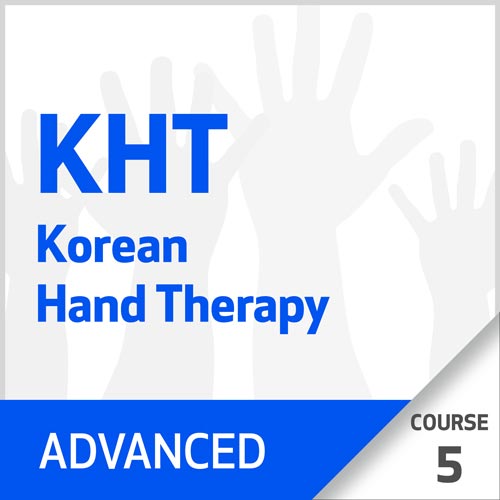

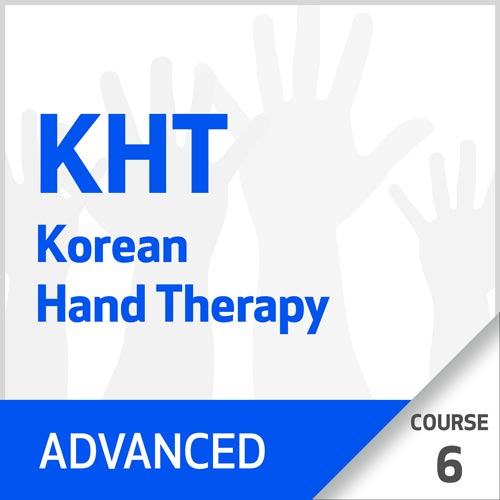

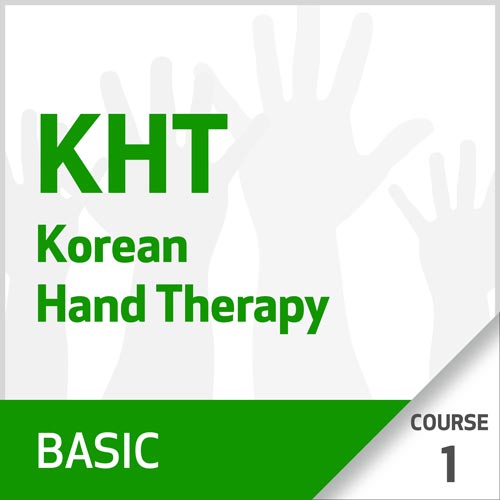

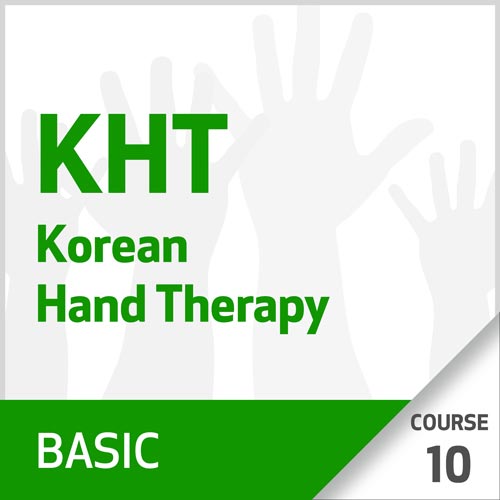

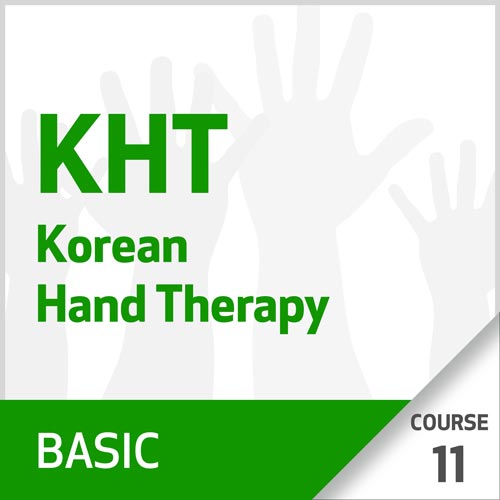



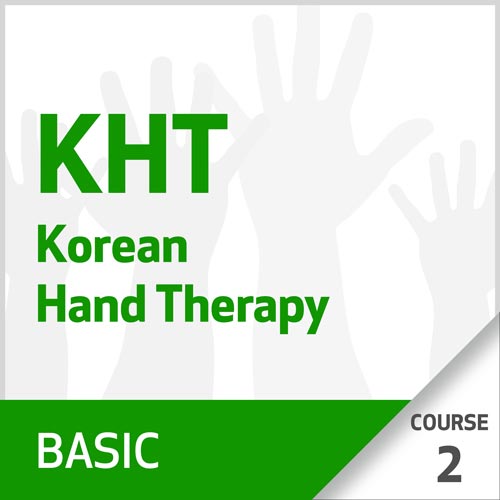

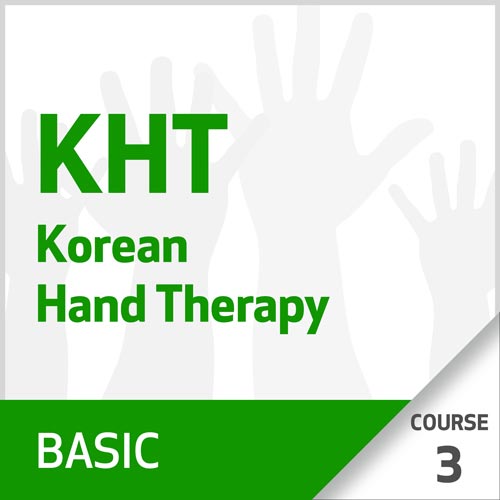

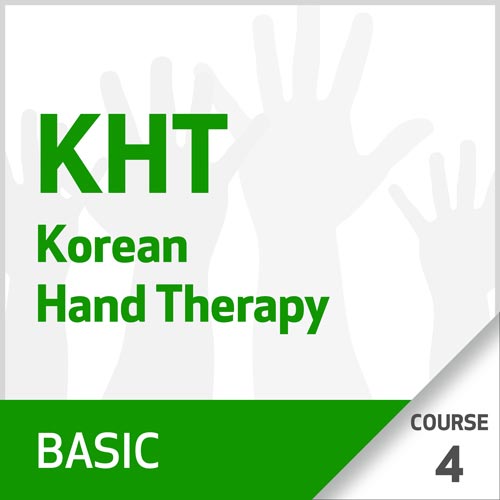

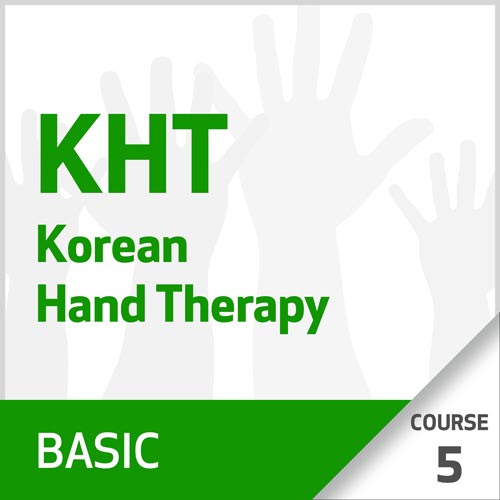

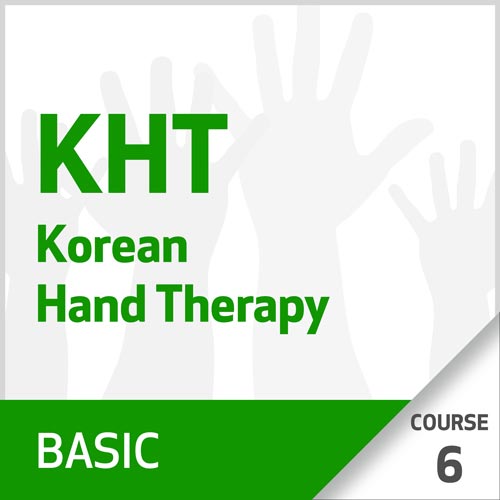

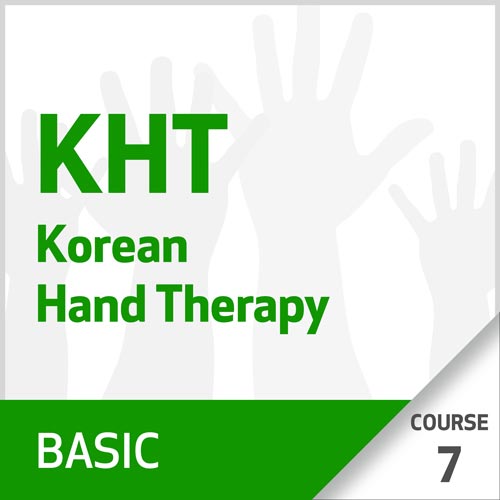

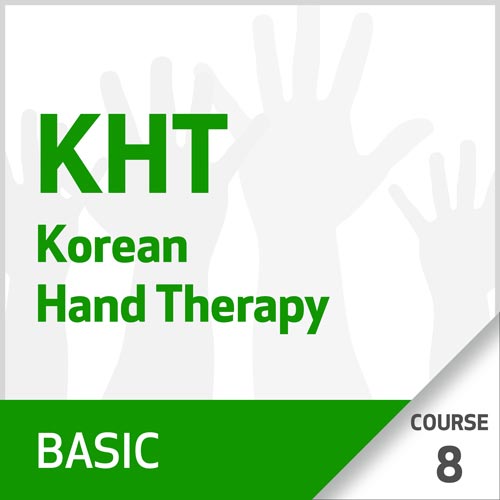

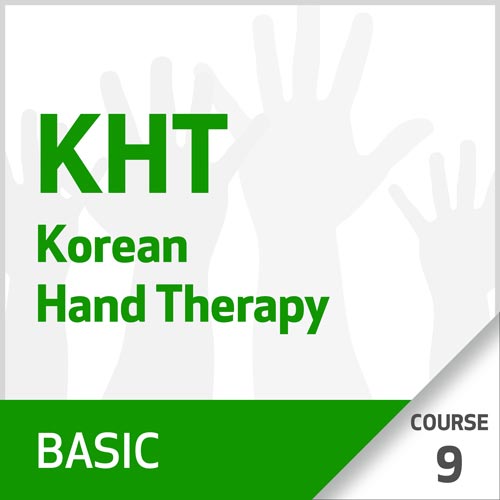

Overview
Hand Moxa for All is for the neophyte as well as the advanced practitioner. The only prerequisite is that you understand that the complete human body exists by corresponding point principles on each hand. You will learn why you should definitely practice moxibustion on the hands. All of your clients should also learn and practice this. Whether you are a massage therapist, a physiotherapist, an acupuncturist, or any kind of health practitioner, you and your clients will definitely benefit. The primary requirement is that you practice it on yourself before recommending it to others. Watch this recording and learn how.
Learning Objectives
- To understand combining moxibustion, needling, and pellets.
- To learn the benefits of hand moxibustion.
- To understand the contraindications for hand moxibustion.
- To learn when and how to prescribe home moxibustion between clinic visits.
- To understand the types of moxibustion available for the hand.
- To learn 10 moxa treatment protocols for common problems.
Your Teacher

Dan Lobash
Dr. Dan Lobash, Ph.D., L.Ac., practices KHT (Korean Hand Therapy) and Traditional Oriental Medicine and has been in practicing for over 30 years. He has taught KHT seminars internationally and is published in several TCM journals.
Categories
Tags
Korean Hand Therapy Advanced - Course 1, Part 1
Micro-meridian Theory: Overview, Location
with Dan Lobash
See In StoreOverview
This learning module is part of the KHT Advanced Topics Series, which covers more challenging topics following the basic courses. This course is the first of five chapters that covers topics on Micro-meridians Therapy.
This course provides an overview on the theory, practice, and value of applying Micro-meridians in Korean Hand Therapy. Topics that are covered include the benefits of using hand Micro-meridians, the similarities and differences of the Micro and body meridians, and levels of application. The location of the Five Element points for Yin and Yang Micro-meridians, special and acu-points, and treatment patterns are also outlined.
Learning Objectives
- Students will understand the maps of the pathways of each of the 12 Micro-meridians on the fingers
- Students will learn the benefits of adding Micro-meridian stimulation to correspondence treatment patterns
- Students will learn the guidelines for Micro-meridian stimulation for tonification, sedation, and even methods
- Students will understand the protocols and strategies for Micro-meridian stimulation
- Students will understand the relationship between the body and hand Micro-meridians
Your Teacher

Dan Lobash
Dr. Dan Lobash, Ph.D., L.Ac., practices KHT (Korean Hand Therapy) and Traditional Oriental Medicine and has been in practicing for over 30 years. He has taught KHT seminars internationally and is published in several TCM journals.
Categories
Tags
Korean Hand Therapy Advanced - Course 1, Part 2
Micro-meridian Theory: Lu-LI, ST-SP - Location, Functions
with Dan Lobash
See In StoreOverview
This learning module is part of the KHT Advanced Topics Series, which covers more challenging topics following the basic courses. This course is the second of five chapters that covers topics on Micro-meridians Therapy.
This course explores the information necessary to understand the major aspects of four KHT Micro-meridians: The Lung, Large Intestine, Spleen, and Stomach. Content that is presented includes the comparison of the Micro-meridians and their body counterparts, the pathway on the hand, and the major functions of the important points. Protocols to treat various health issues are also explored.
Learning Objectives
- Students will understand the major aspects of four KHT Micro-meridians: The Lung, Large Intestine, Spleen, and Stomach.
- Students will understand the functions, characteristics, and symptoms associated with major points on the Micro-meridians covered in the course.
- Students will understand the relationship between the body and hand Micro-meridians
- Students will learn treatment strategies and protocols associated with the Micro-meridians illustrated in the course.
- Students learn the general indications for each Micro-meridian covered in the course.
Your Teacher

Dan Lobash
Dr. Dan Lobash, Ph.D., L.Ac., practices KHT (Korean Hand Therapy) and Traditional Oriental Medicine and has been in practicing for over 30 years. He has taught KHT seminars internationally and is published in several TCM journals.
Categories
Tags
Korean Hand Therapy Advanced - Course 1, Part 3
Micro-meridian Theory: Ht-Si, KI-UB - Location, Functions
with Dan Lobash
See In StoreOverview
This learning module is part of the KHT Advanced Topics Series, which covers more challenging topics following the basic courses. This course is the third of five chapters that covers topics on Micro-meridians Therapy.
This course explores the information necessary to understand the major aspects of four KHT Micro-meridians: The Heart, Small Intestine, Kidney, and Urinary Bladder. Content that is presented include the comparison of the Micro-meridians and their body counterparts, the pathway on the hand, and the major functions of the important points. Protocols to treat various health issues are also explored.
Learning Objectives
- Students will understand the functions, characteristics, and symptoms associated with major points on the Micro-meridians covered in the course.
- Students will learn treatment strategies and protocols associated with the Micro-meridians illustrated in the course.
- Students will understand the relationship between the body and hand Micro-meridians.
- Students learn the general indications for each Micro-meridian covered in the course.
- Students will understand the major aspects of four KHT Micro-meridians: The Heart, Small Intestine, Kidney, and Urinary Bladder.
Your Teacher

Dan Lobash
Dr. Dan Lobash, Ph.D., L.Ac., practices KHT (Korean Hand Therapy) and Traditional Oriental Medicine and has been in practicing for over 30 years. He has taught KHT seminars internationally and is published in several TCM journals.
Category
Tags
Korean Hand Therapy Advanced - Course 1, Part 4
Micro-meridian Theory: Liv-GB, PC-TH - Location, Functions
with Dan Lobash
See In StoreOverview
This learning module is part of the KHT Advanced Topics Series, which covers more challenging topics following the basic courses. This course is the fourth of five chapters that covers topics on Micro-meridians Therapy.
This course explores the information necessary to understand the major aspects of four KHT Micro-meridians: The Liver, Gall Bladder, Pericardium, and Triple Heater. Content that is presented includes the comparison of the Micro-Meridians and their body counterparts, the pathway on the hand, and the major functions of the important points. Protocols to treat various health issues are also explored.
Learning Objectives
- Students will learn treatment strategies and protocols associated with the Micro-meridians illustrated in the course.
- Students learn the general indications for each Micro-meridian covered in the course.
- Students will understand the major aspects of four KHT Micro-meridians: The Liver, Gall Bladder, Pericardium, and Triple Heater.
- Students will understand the functions, characteristics, and symptoms associated with major points on the Micro-meridians covered in the course.
- Students will understand the relationship between the body and hand Micro-meridians.
Your Teacher

Dan Lobash
Dr. Dan Lobash, Ph.D., L.Ac., practices KHT (Korean Hand Therapy) and Traditional Oriental Medicine and has been in practicing for over 30 years. He has taught KHT seminars internationally and is published in several TCM journals.
Category
Tags
Korean Hand Therapy Advanced - Course 1, Part 5
Micro-meridian Theory: A-(Conception Vessel) and B-(Governing Vessel)
with Dan Lobash
See In StoreOverview
This learning module is part of the KHT Advanced Topics Series, which covers more challenging topics following the basic courses. This course is the fifth of five chapters that covers topics on Micro-meridians Therapy.
This course explores the information necessary to understand the major aspects of two KHT Micro-meridians: A-(Conception Vessel) and B-(Governing Vessel). Content that is presented includes the comparison of the Micro-meridians and their body counterparts, the pathway on the hand, and the major functions of the important points. Protocols to treat various health issues are also explored.
Learning Objectives
- Students will understand the functions, characteristics, and symptoms associated with major points on the Micro-meridians covered in the course.
- Students will understand the major aspects of two KHT Micro-meridians: A-(Conception Vessel) and B-(Governing Vessel).
- Students will learn treatment strategies and protocols associated with the Micro-meridians illustrated in the course.
- Students learn the general indications for each Micro-meridian covered in the course.
- Students will understand the relationship between the body and hand Micro-meridians.
Your Teacher

Dan Lobash
Dr. Dan Lobash, Ph.D., L.Ac., practices KHT (Korean Hand Therapy) and Traditional Oriental Medicine and has been in practicing for over 30 years. He has taught KHT seminars internationally and is published in several TCM journals.
Categories
Tags
Korean Hand Therapy Advanced - Course 2
Eight-Extraordinary Micro-meridian Therapy
with Dan Lobash
See In StoreOverview
This learning module is part of the KHT Advanced Topics Series, which covers more challenging topics following the basic courses. This course is the second of 6 modules that covers Advanced KHT topics.
This course explores how the Eight Extraordinary meridians are powerful ways to influence the bodies’ energetic. KHT has mapped the Eight Extraordinary Micro-meridians on the hands. Stimulating the micro Master and Coupled points gives dramatic and fast responses. In KHT, they are applied both symptomatically and as prescriptions based on KHT diagnostic procedures. Emphasis is on the application of non-invasive silver and gold pellets.
Learning Objectives
- Students will learn how to accurately find the correct locations of each of the Eight Extraordinary Points
- Students will learn functions of each of the Eight-Extraordinary Micro-meridians
- Students will learn general indications for each of the Master and Coupled points
- Students will learn how and when to apply the KHT Eight-Extraordinary Micro-meridians
Your Teacher

Dan Lobash
Dr. Dan Lobash, Ph.D., L.Ac., practices KHT (Korean Hand Therapy) and Traditional Oriental Medicine and has been in practicing for over 30 years. He has taught KHT seminars internationally and is published in several TCM journals.
Categories
Tags
Overview
This learning module is part of the KHT Advanced Topics Series, which covers more challenging topics following the basic courses. This is Module 3 of 6 in the Advanced topic series.
This course covers the Five Element, Four Point Micro-meridian tonification and sedation theory, location, and applications. Also included will be selection principles of points and applications for both hot (excess heat) and cold (excess deficiency) as well as a simplified two point treatment pattern. Application of both needles and pellets is explained. The focus of this Module is to understand the theory and application of the Five Element model in KHT.
Learning Objectives
- Students will understand creative and control cycle relationships
- Students will understand the application of Korean Hand points using needles and pellets
- Students will learn the basic principles of the 5 Element Model
- Students will learn Five Element, Four point and Two point patterns for Tonification and Sedation
Your Teacher

Dan Lobash
Dr. Dan Lobash, Ph.D., L.Ac., practices KHT (Korean Hand Therapy) and Traditional Oriental Medicine and has been in practicing for over 30 years. He has taught KHT seminars internationally and is published in several TCM journals.
Categories
Tags
Korean Hand Therapy Advanced - Course 4, Part 1
Three Constitutions Diagnosis: Review
with Dan Lobash
See In StoreOverview
This learning module is part of the KHT Advanced Topics Series, which covers more challenging topics following the basic courses. This course is the first of four parts that cover Three Constitutions Diagnosis.
Three Constitutions Diagnosis is one of the main diagnostic methods in KHT - understanding the theory and protocols will enable the practitioner to determine the energetic excess and deficiency patterns of the twelve body meridians. This information provides a guide to selecting the most appropriate meridian to restore energetic balance. The focus of part 1 is a review of prior materials in preparation for learning the Three Constitutions.
Learning Objectives
- The student will understand the naming and location of the 12 Micro-meridians.
- The student will learn the point location of the Eight extraordinary Micro-meridians and points.
- The student will understand the theory and application of Correspondence Therapy.
- The student will learn important operating rules, relationships, and applications of the Five Element Micro-meridian model.
Your Teacher

Dan Lobash
Dr. Dan Lobash, Ph.D., L.Ac., practices KHT (Korean Hand Therapy) and Traditional Oriental Medicine and has been in practicing for over 30 years. He has taught KHT seminars internationally and is published in several TCM journals.
Categories
Tags
Korean Hand Therapy Advanced - Course 4, Part 2
Three Constitutions Diagnosis: Theory & Application
with Dan Lobash
See In StoreOverview
This learning module is part of the KHT Advanced Topics Series, which covers more challenging topics following the basic courses. This course is the second of four parts that cover Three Constitutions Diagnosis.
Three Constitutions Diagnosis is one of the main diagnostic methods in KHT; understanding the theory and protocols will enable the practitioner to determine the energetic excess and deficiency patterns of the twelve body meridians. This information provides a guide to selecting the most appropriate meridian to restore energetic balance. Part 2 covers the theory and development of the energetic patterns of the twelve meridians in each of the three constitutions: Yin, Kidney, and Yang Excess Constitutions.
Learning Objectives
- The student will learn The Yang Excess Pattern Development: Application of the Five Element Model, Procedure for the left side of the abdomen for Yang Excess, and Procedure for the right side of the abdomen for Yang Excess.
- The student will learn The Kidney Excess Pattern Development: Application of the Five Element Model, Procedure for the left side of the abdomen for Kidney Excess, and Procedure for the right side of the abdomen for Kidney Excess.
- Students will understand the rationale and treatment sequence on the abdomen to determine for each side the energetic patterns in terms of excess or deficiency of the 12 meridians and three Constitutions: Yin, Yang, and Kidney Excess.
- The student will learn The Yin Excess Pattern Development: Application of the Five Element Model, Procedure for the left side of the abdomen for Yin Excess, and Procedure for the right side of the abdomen Yin Excess.
Your Teacher

Dan Lobash
Dr. Dan Lobash, Ph.D., L.Ac., practices KHT (Korean Hand Therapy) and Traditional Oriental Medicine and has been in practicing for over 30 years. He has taught KHT seminars internationally and is published in several TCM journals.
Categories
Tags
Korean Hand Therapy Advanced - Course 4, Part 3
Three Constitutions Diagnosis: Confirmation of Diagnosis
with Dan Lobash
See In StoreOverview
This learning module is part of the KHT Advanced Topics Series, which covers more challenging topics following the basic courses. This course is the third of four parts that cover Three Constitutions Diagnosis.
Three Constitutions Diagnosis is one of the main diagnostic methods in KHT. Understanding the theory, practice and application will enable the practitioner to exactly determine the energetic excess and deficiency patterns of all twelve meridians. This information provides the most appropriate meridian or micro-meridian to restore energetic balance to all 12 meridians and thus to restore health to the client. Part 3 focuses on methods to confirm the Three Constitution Diagnosis and then to treat the constitution.
Learning Objectives
- The student will also learn how to apply treatment Patterns for the Three Constitutions
- The student will learn how to do confirmation of the Three Constitution Diagnosis determined through the use of Pellets, Test Probes, and Silver Rings
- The student will also learn how to treat the Three Constitutions with Pellets, Hand Needles, and Silver Colored Rings
Your Teacher

Dan Lobash
Dr. Dan Lobash, Ph.D., L.Ac., practices KHT (Korean Hand Therapy) and Traditional Oriental Medicine and has been in practicing for over 30 years. He has taught KHT seminars internationally and is published in several TCM journals.
Categories
Tags
Korean Hand Therapy Advanced - Course 4, Part 4
Three Constitutions Diagnosis: Demonstration of Parts 1, 2 & 3
with Dan Lobash
See In StoreOverview
This learning module is part of the KHT Advanced Topics Series, which covers more challenging topics following the basic courses. This course is the fourth of four parts that cover Three Constitutions Diagnosis.
Three Constitutions Diagnosis is one of the main diagnostic methods in Korean Hand Therapy. Understanding the theory, practice and application will enable the practitioner to exactly determine the energetic excess and deficiency patterns of all twelve meridians. This information provides the most appropriate meridian to restore energetic balance to all 12 meridians. Part 4 focuses on illustrating Three Constitutions diagnosis, confirmation, and treatment.
Learning Objectives
- The student will be able to treat and confirm the value of each step with Feedback on Pain and Range of Motion.
- The student will learn how to do a KHT intake of a client with chronic sciatic pain.
- The student will be able to confirm Three Constitution Diagnosis with Pellets, Test Probes, and Silver Rings.
- The student will be able to diagnose the Three Constitutions of the client.
Your Teacher

Dan Lobash
Dr. Dan Lobash, Ph.D., L.Ac., practices KHT (Korean Hand Therapy) and Traditional Oriental Medicine and has been in practicing for over 30 years. He has taught KHT seminars internationally and is published in several TCM journals.
Category
Tags
Overview
This module is part of the KHT Advanced Topics Series, which covers more challenging subjects. This is the 5th Module of 6 sections in the KHT Advanced Series.
This course covers Yin-Yang Pulse diagnosis theory and application. Attendees learn a unique approach to pulse diagnosis. Conclusions drawn from Yin-Yang Pulse diagnosis can be applied to body as well as hand micro-meridian treatments. The diagnosis will be identical across diverse, trained practitioners.
Learning Objectives
- Students will understand basic yin-yang pulse diagnosis concepts such as: Describing the rationale for application of Yin-Yang diagnosis, differentiating Yang Type vs. Yin Type Pulses, several metaphors for the “smooth vs. rough” pulse quality, and know the differentiate ratios: 1X (times), 2X or 3X for each meridian.
- Students will understand the theory and procedure of diagnosis and treatment confirmation by Applying pellets and rings, comparing differentials between Carotid and Radial pulses, treating front associated points for excess tissue characteristics.
- Students will learn how to locate: All Micro-meridians, all Five Element points for Yin and Yang Meridians, and all Eight Extraordinary points.
Your Teacher

Dan Lobash
Dr. Dan Lobash, Ph.D., L.Ac., practices KHT (Korean Hand Therapy) and Traditional Oriental Medicine and has been in practicing for over 30 years. He has taught KHT seminars internationally and is published in several TCM journals.
Categories
Tags
Korean Hand Therapy Advanced - Course 6
The Seven Steps to Healing Effectiveness with KHT
with Dan Lobash
See In StoreOverview
This module is part of the KHT Advanced Topics Series, which covers more challenging subjects. This is the 6th module of 6 in the KHT Advanced Series. It is recommended that all previous modules from the basic level, through the 5 advanced modules be completed prior to taking this module.
In this course, students will have the opportunity to learn how to sequentially build a treatment plan beginning with Correspondence Therapy and ending with a comprehensive Micro-meridian treatment plan, which includes all seven steps for maximum healing effectiveness. Each step includes some appropriate review material to make the step understandable without returning to previous course handouts.
Learning Objectives
- Students will understand the theory and application procedure of each of the seven steps.
- Students will learn how to add Symptomatic Micro-meridian treatment and Micro-meridian tonification and sedation.
- Students will learn how to add special points, and Eight Extraordinary Master and Coupled points.
- Students will understand how to add Micro-meridian treatment based on Three Constitutional Diagnosis and how to add Eight Extraordinary Micro-meridian and Micro-meridian treatments based on Three Constitution and Yin Yang Pulse Diagnosis.
Your Teacher

Dan Lobash
Dr. Dan Lobash, Ph.D., L.Ac., practices KHT (Korean Hand Therapy) and Traditional Oriental Medicine and has been in practicing for over 30 years. He has taught KHT seminars internationally and is published in several TCM journals.
Categories
Tags
Overview
This learning module is part one in a 12-part series that presents the basic theories, concepts, and methods of treatment for Korean Hand Therapy (KHT). All 12 modules can be viewed in two days, or over time individually.
Module 1, ‘Overview and Development of KHT,’ presents an introduction to KHT: Korean Hand Therapy including the historical development, applications, benefits, limitations, and scientific studies validating KHT.
Attendees will have a thorough understanding of KHT basics upon taking all of the courses in this series.
Learning Objectives
- Students will get an overview of the concept of the body as a hologram with unlimited correspondence patterns
- Students will get further information on studies that have been conducted validating the effects of KHT
- Students will have an understanding of the history of KHT
- Students will have an overview of the benefits of KHT for both patients and practitioners
- Students will learn the unique areas of application for KHT
Your Teacher

Dan Lobash
Dr. Dan Lobash, Ph.D., L.Ac., practices KHT (Korean Hand Therapy) and Traditional Oriental Medicine and has been in practicing for over 30 years. He has taught KHT seminars internationally and is published in several TCM journals.
Categories
Tags
Overview
This learning module is part 10 in a 12-part series that presents the basic theories, concepts, and methods of treatment for Korean Hand Therapy (KHT). All 12 modules can be viewed in two days, or over time individually.
Module 10, 'Microsystem Combinations’ presents the various combinations of these protocols that can resolve a problem. The topics of combining principles and examples are covered. A history and introduction to ECIWO and Su Jok Micro-systems are also illustrated.
Attendees will have a thorough understanding of KHT basics upon taking all of the courses in this series.
Learning Objectives
- Students will get an understanding of combinations that can be used to treat liver problems, head, shoulder, and neck pain.
- Students will learn combining principles
- Students will learn the history and protocols for ECIWO and Su Jok
Your Teacher

Dan Lobash
Dr. Dan Lobash, Ph.D., L.Ac., practices KHT (Korean Hand Therapy) and Traditional Oriental Medicine and has been in practicing for over 30 years. He has taught KHT seminars internationally and is published in several TCM journals.
Categories
Tags
Korean Hand Therapy Basics - Course 11
Self-Treatment and KHT Treatment Plans
with Dan Lobash
See In StoreOverview
This learning module is part 11 in a 12-part series that presents the basic theories, concepts, and methods of treatment for Korean Hand Therapy (KHT). All 12 modules can be viewed in two days, or over time individually.
Module 11 presents an overview of the benefits of getting a client involved in his/her own treatment. Guidelines for the ‘Low Cost Treatment Protocols’ booklet will be covered in detail, and how the material in it can be applied to daily practice. Treatment protocols for many common problems and examples will also be given.
Attendees will have a thorough understanding of KHT basics upon taking all of the courses in this series.
Learning Objectives
- Students will learn self-treatment protocols that patients can learn, and the benefits of getting clients involved.
- Students will have a sense of the various pellet, moxabustion, and point finding protocols for various clinic situations.
- Students will learn the treatment guidelines for common problems such as neck pain, sciatic pain, chronic stomach pain, and PMS.
- Students will have a better understanding of the protocols outlined in the 'Low Cost Treatment' download.
Your Teacher

Dan Lobash
Dr. Dan Lobash, Ph.D., L.Ac., practices KHT (Korean Hand Therapy) and Traditional Oriental Medicine and has been in practicing for over 30 years. He has taught KHT seminars internationally and is published in several TCM journals.
Categories
Tags
Overview
This learning module is part 12 in a 12-part series that presents the basic theories, concepts, and methods of treatment for Korean Hand Therapy (KHT). All 12 modules can be viewed in two days, or over time individually.
Module 12, ‘KHT in More Complex Cases’ gives an introduction to the wide range of diagnostic and treatment options available through this modality. Examples from working with Micro-meridians to Micro-meridian diagnosis are covered. A brief overview of where to find KHT supplies and more information is also outlined.
Attendees will have a thorough understanding of KHT basics upon taking all of the courses in this series.
Learning Objectives
- Students will learn about Ring Therapy Assessment and Yin-Yang Pulse Diagnosis.
- Students will have an understanding of the Three Constitutions and Muscle Testing Constitution Assessment.
- Students will learn about Micro-meridian and Eight Extraordinary Micro-meridian Therapy.
Your Teacher

Dan Lobash
Dr. Dan Lobash, Ph.D., L.Ac., practices KHT (Korean Hand Therapy) and Traditional Oriental Medicine and has been in practicing for over 30 years. He has taught KHT seminars internationally and is published in several TCM journals.
Categories
Tags
Overview
This learning module is part 2 in a 12-part series that presents the basic theories, concepts, and methods of treatment for Korean Hand Therapy (KHT). All 12 modules can be viewed in two days, or over time individually.
Module 2, ‘Mapping the Body on the Hands' presents an overview of operating rules for using the hands to search and treat physical problems. The corresponding locations of the arms, legs, hands and feet will also be explored. Major ‘B’ (GV) and ‘A’ (CV) Micro-meridian divisions are also covered, and protocols to manually find and image the sacrum on the dorsal hand surface will also be presented.
Attendees will have a thorough understanding of KHT basics upon taking all of the courses in this series.
Learning Objectives
- Students will learn the Nine Structural Correspondence Rules.
- Students will learn the protocols for finding the correspondence of points in the the arms, legs, hands, feet, and head.
- Students will learn how to create a virtual sacrum.
- Students will have an understanding of key points along the 'A' and 'B' Micro-meridians.
- Students will also get an overview of the 'animal' hand posture and the anatomical posture in KHT.
Your Teacher

Dan Lobash
Dr. Dan Lobash, Ph.D., L.Ac., practices KHT (Korean Hand Therapy) and Traditional Oriental Medicine and has been in practicing for over 30 years. He has taught KHT seminars internationally and is published in several TCM journals.
Categories
Tags
Korean Hand Therapy Basics - Course 3
Manual and Electric Point Finding
with Dan Lobash
See In StoreOverview
This learning module is part 3 in a 12-part series that presents the basic theories, concepts, and methods of treatment for Korean Hand Therapy (KHT). All 12 modules can be viewed in two days, or over time individually.
Module 3, 'Manual and Electronic Point Finding' presents an overview of hand stimulation, metal and electronic point finders, point finding for neck problems, and client instructions for self-treatment.
Attendees will have a thorough understanding of KHT basics upon taking all of the courses in this series.
Learning Objectives
- The difference between different types of hand stimulators, and the impact on blood flow
- The guidelines for manual and electronic point finding, and also using them together
- The difference between Gold vs. Silver coloured massagers
Your Teacher

Dan Lobash
Dr. Dan Lobash, Ph.D., L.Ac., practices KHT (Korean Hand Therapy) and Traditional Oriental Medicine and has been in practicing for over 30 years. He has taught KHT seminars internationally and is published in several TCM journals.
Categories
Tags
Korean Hand Therapy Basics - Course 4
Non-Invasive Methods of Point Stimulation
with Dan Lobash
See In StoreOverview
This learning module is part 4 in a 12-part series that presents the basic theories, concepts, and methods of treatment for Korean Hand Therapy (KHT). All 12 modules can be viewed in two days, or over time individually.
Module 4, 'Non-Invasive Methods of Point Stimulation' presents an overview of the principles of stimulating using metal pellets and Stipers, and clarification on what they are, and how they work are outlined. Concepts surrounding hand moxabustion and types of electrical moxa warmers are also explored as well as protocols for treating acute and chronic conditions.
Attendees will have a thorough understanding of KHT basics upon taking all of the courses in this series.
Learning Objectives
- Students will have a comprehension about how various KHT applications can help treat acute and chronic conditions.
- Students will understand the different pellet types and how they work.
- Students will get an understanding of the benefits of using hand moxibustion and moxa warmers.
- Students will learn the principles of point stimulation with pellets and Stipers.
Your Teacher

Dan Lobash
Dr. Dan Lobash, Ph.D., L.Ac., practices KHT (Korean Hand Therapy) and Traditional Oriental Medicine and has been in practicing for over 30 years. He has taught KHT seminars internationally and is published in several TCM journals.
Categories
Tags
Korean Hand Therapy Basics - Course 5
Needling Theory, Assessment, Treatment and Practice
with Dan Lobash
See In StoreOverview
This learning module is part 5 in a 12-part series that presents the basic theories, concepts, and methods of treatment for Korean Hand Therapy (KHT). All 12 modules can be viewed in two days, or over time individually.
Module 5, 'Needling Theory, Assessment, Treatment and Practice' presents an overview of the theory and tools of hand stimulation, which includes detailed information on insertions and needles. The topic of needling reactions and hand needling protocols are also explored. The instructor also looks at the treatment of various musculoskeletal conditions.
Attendees will have a thorough understanding of KHT basics upon taking all of the courses in this series.
Learning Objectives
- Students will learn the theory and tools for basic KHT protocols.
- Students will learn why a certain protocol is used when, and guidelines for diagnosing patients.
- Students will understand the different reactions patients may have towards needling.
- Students will get an overview of treatments for various musculoskeletal conditions.
Your Teacher

Dan Lobash
Dr. Dan Lobash, Ph.D., L.Ac., practices KHT (Korean Hand Therapy) and Traditional Oriental Medicine and has been in practicing for over 30 years. He has taught KHT seminars internationally and is published in several TCM journals.
Categories
Tags
Korean Hand Therapy Basics - Course 6
Review of Modules 1-5 to Refine Location Accuracy
with Dan Lobash
See In StoreOverview
This learning module is part 6 in a 12-part series that presents the basic theories, concepts, and methods of treatment for Korean Hand Therapy (KHT). All 12 modules can be viewed in two days, or over time individually.
This course, 'Review of Modules 1-5 to Refine Location Accuracy,' presents a review of the key points covered in parts 1-5 in this series. Some key concepts that are covered are the protocols for accurate location of corresponding points and structures. Areas of the body that are reviewed are areas in the upper body, such as the shoulders, elbows,and hands, and also areas in the lower body such as the hips, knees, and feet.
Attendees will have a thorough understanding of KHT basics upon taking all of the courses in this series.
Learning Objectives
- Students will also get a refresher on key points regarding the “A” meridian for key points and functions, Front “A” line Associated points, Vertebral areas, and key landmarks on the spine.
- Students will get a more comprehensive understanding and review of the key concepts covered in KHT Modules 1-5.
- Students will have a more thorough understanding of the key locations of points on the hands in regards to points associated with the elbows, shoulders, wrists, hips, knees, and feet.
Your Teacher

Dan Lobash
Dr. Dan Lobash, Ph.D., L.Ac., practices KHT (Korean Hand Therapy) and Traditional Oriental Medicine and has been in practicing for over 30 years. He has taught KHT seminars internationally and is published in several TCM journals.
Categories
Tags
Korean Hand Therapy Basics - Course 7
Special Patterns to Enhance the Effects of Correspondence Therapy
with Dan Lobash
See In StoreOverview
This learning module is part 7 in a 12-part series that presents the basic theories, concepts, and methods of treatment for Korean Hand Therapy (KHT). All 12 modules can be viewed in two days, or over time individually.
Module 7, 'Special Patterns to Enhance the Effects of Correspondence Therapy,' presents an overview of KHT protocols that can be used to treat a wide variety of physical, mental, and emotional issues. These protocols can be used in a standalone manner, or to enhance correspondence therapy.
Attendees will have a thorough understanding of KHT basics upon taking all of the courses in this series.
Learning Objectives
- Students will understand the important points of the 'A' Micro-meridian, and the front associated points.
- Students will also have a more thorough comprehension of the longevity pattern for men and women, and basic therapy protocols for upper, middle, and lower functional areas.
- Students will learn the abdominal basic prescription, and a mental and emotional re-centering pattern.
Your Teacher

Dan Lobash
Dr. Dan Lobash, Ph.D., L.Ac., practices KHT (Korean Hand Therapy) and Traditional Oriental Medicine and has been in practicing for over 30 years. He has taught KHT seminars internationally and is published in several TCM journals.
Categories
Tags
Korean Hand Therapy Basics - Course 8
Micro-Meridian-Back Transport Points and Micro-Meridians as Landmarks
with Dan Lobash
See In StoreOverview
This learning module is part 8 in a 12-part series that presents the basic theories, concepts, and methods of treatment for Korean Hand Therapy (KHT). All 12 modules can be viewed in two days, or over time individually.
Module 8, 'Micro-meridian-Back Transport Points and Micro-meridians as Landmarks,' presents an overview of the protocols of how the B-Micro-meridian is used in KHT. The topic of the location of the 12 back transport points on the hand is also explored, along with the concept of the 12 Micro-meridians on the fingers as landmarks or pathways for corresponding point location.
Attendees will have a thorough understanding of KHT basics upon taking all of the courses in this series.
Learning Objectives
- Students will know the location of the 12 back transport points on the hand.
- Students will learn about protocols in regards to the B-Micro-meridian and how it is used in KHT.
- Students will understand the concepts regarding the 12 Micro-meridians on the fingers as landmarks or pathways for corresponding point location.
Your Teacher

Dan Lobash
Dr. Dan Lobash, Ph.D., L.Ac., practices KHT (Korean Hand Therapy) and Traditional Oriental Medicine and has been in practicing for over 30 years. He has taught KHT seminars internationally and is published in several TCM journals.
Categories
Tags
Overview
This learning module is part 9 in a 12-part series that presents the basic theories, concepts, and methods of treatment for Korean Hand Therapy (KHT). All 12 modules can be viewed in two days, or over time individually.
Module 9, 'Corresponding Point Locations' presents a review of random point locations on the body. Areas covered include points on the front, back, and sides of the body. The instructor will go over points that new students may often have trouble identifying.
Attendees will have a thorough understanding of KHT basics upon taking all of the courses in this series.
Learning Objectives
- Students will have a clearer understanding of the eight points on the back of the body
- Students will have a clearer understanding of the eight points on the front of the body
- Students will have a more thorough understanding of the seven points on the sides of the body
Your Teacher

Dan Lobash
Dr. Dan Lobash, Ph.D., L.Ac., practices KHT (Korean Hand Therapy) and Traditional Oriental Medicine and has been in practicing for over 30 years. He has taught KHT seminars internationally and is published in several TCM journals.
